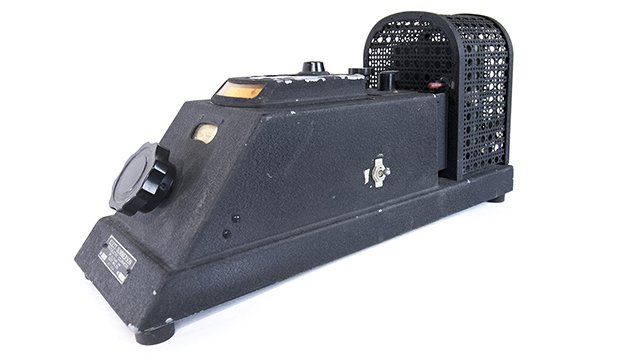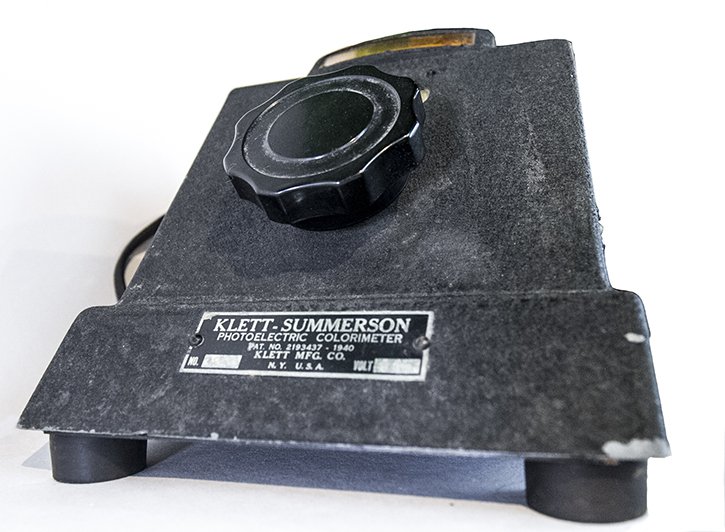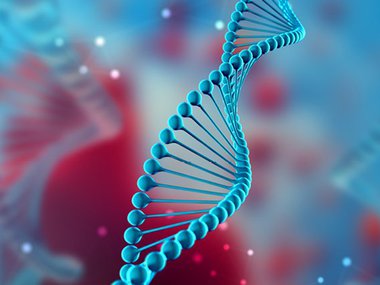The Story Behind Scientific Tools: Colorimeter
If this was an episode of Family Feud, and a contestant was asked to name a tool that represents science, there’s a good chance a microscope would be among the top answers provided by the 100 people surveyed. While microscopes might have earned a place in everyone’s mind as a scientific treasure, colorimeters deserve attention and respect, too!

You’ll be forgiven if you’ve never heard of a colorimeter … unless you had science teacher A. L. Williams at Manchester High School in the 1940s-50s or at Huguenot High School in the early 1960s. You might expect a sophisticated scientific instrument to be in specialty labs and research hospitals, but Williams had one in his high school science lab. We know this because the Science Museum of Virginia has a colorimeter in its object collection that was donated in his memory.
A colorimeter is a precursor to more recent tools and instruments, such as a dip stick and plate reader, that experts have used to learn more about anatomy and physiology.
Think back to the last time you had a full lab workup from your doctor. They probably ordered some bloodwork, and maybe a urine sample, because they wanted to check levels like glucose, iron, cholesterol, etc. When results came in, the physician was able to tell if your numbers were within the typical range.

You probably spent more time thinking about the lab results than you did what instruments helped produce those results, but many of the tools in that medical lab have a common ancestor, an important tool that has shaped medical professionals view of the typical range for each item. We’re of course talking about the colorimeter.
The device is used to test the concentration of a substance in a solution by measuring its absorbance of a specific wavelength of light. Said another way, it reads the concentration of a molecule in body fluids, such as blood, urine and saliva. It goes beyond the presence or absence of the molecule to provide a reading on a gradation spectrum.
The color part of the instrument’s name comes from the optical filters inside that show how much of a color is reflected or absorbed. (remember: the only wavelength transmitted back from an object is the color you see.) A professional – or in the case of the Museum’s object, a teacher – would collect the sample, add chemicals that bind to the molecule and give it a color, put it into the colorimeter, turn on the light source inside the tool, use the correct color filter to enable the photocell to detect the amount of light passing through the solution, and then examine the output information the machine provided about the concentration of particles.
In earlier colorimeters before computer technology, the information produced would need additional interpretation, usually through a math equation specific to each molecule. The Museum’s artifact also contains the manual, which helpfully provides the conversation equation for uric acid, glucose, cholesterol and a few others listed on each tab.

The earliest true colorimeter featuring a glass prism that helped control red, green, and blue light beams independently to match the color in the sample was Scottish scientist James Clerk Maxwell’s color box invented in 1860. Photoelectric colorimetry became popular in the mid-1930s, and in 1938 William Henry Summerson applied for a patent for his colorimeter containing a photocell.
In his application, Summerson noted that this innovation to the so-called analytical biochemistry measuring instrument would bring “convenience, speed, accuracy and other advantages” while providing reliable results not subject to interpretations of the human eye. A year later, Klett Manufacturing Co. of New York began marketing Summerson’s photocell colorimeter.
The consistency and standardization the Museum’s colorimeter offered were what made the instrument a powerful teaching tool for a high school classroom. By involving students in the discovery process, Williams no doubt inspired future nurses, doctors and scientists by having the machine in his science lab. The donation of the colorimeter in his honor speaks to the role educators and mentors play in inspiring future STEM leaders, and helping us all discover more about our world.
A version of this article was originally published by the Richmond Times-Dispatch in April 2021.


